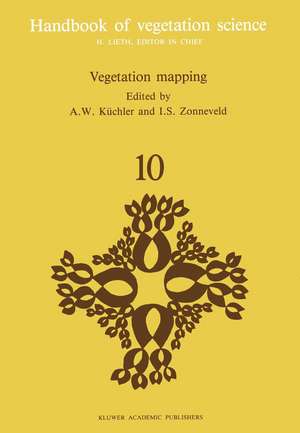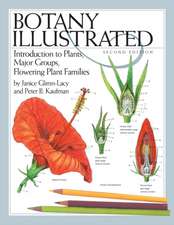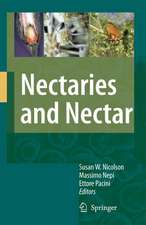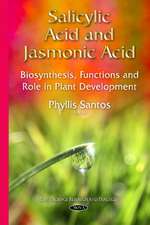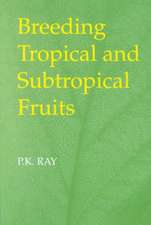Vegetation mapping: Handbook of Vegetation Science, cartea 10
Autor A.W. Küchler, I.S. Zonnevelden Limba Engleză Paperback – 12 feb 2012
Din seria Handbook of Vegetation Science
- 18%
 Preț: 1839.50 lei
Preț: 1839.50 lei - 18%
 Preț: 1228.96 lei
Preț: 1228.96 lei - 18%
 Preț: 1241.25 lei
Preț: 1241.25 lei -
 Preț: 403.37 lei
Preț: 403.37 lei - 18%
 Preț: 1234.00 lei
Preț: 1234.00 lei - 15%
 Preț: 645.47 lei
Preț: 645.47 lei - 18%
 Preț: 1845.65 lei
Preț: 1845.65 lei - 18%
 Preț: 1221.69 lei
Preț: 1221.69 lei - 18%
 Preț: 1227.36 lei
Preț: 1227.36 lei - 15%
 Preț: 659.53 lei
Preț: 659.53 lei - 15%
 Preț: 642.82 lei
Preț: 642.82 lei - 18%
 Preț: 954.93 lei
Preț: 954.93 lei - 15%
 Preț: 649.54 lei
Preț: 649.54 lei -
 Preț: 382.50 lei
Preț: 382.50 lei - 20%
 Preț: 603.15 lei
Preț: 603.15 lei - 18%
 Preț: 1218.53 lei
Preț: 1218.53 lei - 18%
 Preț: 1847.35 lei
Preț: 1847.35 lei -
 Preț: 392.75 lei
Preț: 392.75 lei
Preț: 612.64 lei
Preț vechi: 765.81 lei
-20% Nou
Puncte Express: 919
Preț estimativ în valută:
117.23€ • 122.96$ • 97.59£
117.23€ • 122.96$ • 97.59£
Carte tipărită la comandă
Livrare economică 28 martie-03 aprilie
Preluare comenzi: 021 569.72.76
Specificații
ISBN-13: 9789401078856
ISBN-10: 9401078858
Pagini: 648
Ilustrații: 632 p.
Dimensiuni: 195 x 260 x 34 mm
Ediția:Softcover reprint of the original 1st ed. 1988
Editura: SPRINGER NETHERLANDS
Colecția Springer
Seria Handbook of Vegetation Science
Locul publicării:Dordrecht, Netherlands
ISBN-10: 9401078858
Pagini: 648
Ilustrații: 632 p.
Dimensiuni: 195 x 260 x 34 mm
Ediția:Softcover reprint of the original 1st ed. 1988
Editura: SPRINGER NETHERLANDS
Colecția Springer
Seria Handbook of Vegetation Science
Locul publicării:Dordrecht, Netherlands
Public țintă
ResearchCuprins
A. Introduction.- 1. Preface.- 2. Historical Sketch.- B. Basic Considerations.- 3. The nature of Vegetation.- 4. Composition and Structure of Vegetation.- 4A. Physiognomic and Structural Analysis of Vegetation.- 5. Floristic Analysis of Vegetation.- 6. The Classification of Vegetation.- 6A. Establishing a Floristic Classification.- 7. The Nature of the Environment.- C. Cartographic Considerations.- 8. Aspects of Maps.- 9. Boundaries, Transitions and Contínua.- 10. Patterns, Colors and Symbols.- 11. The Legend: Organizing the Map Content.- 11A. Examples of Vegetation Maps, their Legends and Ecological Diagrams.- 12. Language of Map Text.- 13. Other Technicalities.- 14. Automated Cartography and Electronic Geographic Information Systems.- D. Methods and Procedures of Mapping.- 15. General Considerations.- 16. Survey Approaches.- 16A. Low-level Aerial Survey Techniques.- 17. Sampling.- 18. Reflection, Absorption and Transmission of Light and Infrared Radiation through Plant Tissues.- 19. Observation Means and Platforms.- 19A. A Practical Application of Radar Imagery for Tropical Rain Forest Vegetation Mapping.- 20. Interpretation of Remote Sensing Images.- 21. Digital Image Processing Computer-aided Classification and Mapping.- 22. Mapping Herbaceous Vegetation.- 23. Mapping Dynamic Vegetation.- 24. Monitoring Vegetation and Surveying Dynamics.- 25. Mapping Land-use.- 26. Mapping the Potential Natural Vegetation.- 27. Compiling Small Scale Vegetation Maps from Source Maps.- E. Examples of Vegetation Mapping Schools.- 28. Küchler’s Comprehensive Method.- 29. The ITC Method of Mapping Natural and Semi-natural Vegetation with appendix at A.H.M. Gils and W.v. Wijngaarden.- 30. Vegetation Mapping in Japan.- 31. The International Vegetation Map (Toulouse, France).- 32. OtherContributions to Methodology.- F. Ecological Information in Vegetation and Related Landscape Maps.- 33. Ecological Vegetation Maps and their Interpretation.- 34. Landscape (Ecosystem) and Vegetation Maps, their Relation and Purpose.- G. The Application of Vegetation Maps.- 35. Introduction to the Application of Vegetation Maps.- 36. Environmental Indication.- 37. Basic Principles of Land Evaluation using Vegetation and other Attributes.- 38. Some Examples of Application.- H. Conclusion.- 39. The Outlook: Future Needs and Possibilities.- 40. The UNESCO Classification of Vegetation.- Colour Section.
Recenzii
`This book brings together in one volume techniques for collecting, analyzing, and storing information on the distribution of vegetation on the earth's surface, and even though the book is expensive, it should be on every plant geographer's bookshelf.'
C. Pearce, Cartographica, Vol. 26, nos. 3 + 4
C. Pearce, Cartographica, Vol. 26, nos. 3 + 4
